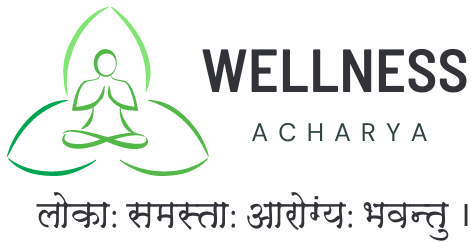PARKINSONS & AYURVEDA
Parkinson’s Disease (PD) is a chronic, progressive neurodegenerative disease characterized by both motor and nonmotor features.
If we study the all available literature of Ayurveda the following are the key observed symptoms of kampavata:—
- Kampa (Tremor)
- Sthambha (Rigidity) ‘
- Chestasanga (Slowness Of Movement)
- Vak Vikriti (Speech Disorder)
- Avanamana (Flexion Posture )
- Kshinamati (Dementia)
- Smritihani (Loss Of Memory)
- Vivandha (Constipation)
Loss of dopamine-secreting neurons within the substantia nigra and presence of α-syn Lewy bodies are the major pathological findings in Parkinson disease. Early in the disease course, dopamine deficiency is the predominant neurochemical abnormality. As the disease progresses, involvement of non-dopaminergic brain regions results in levodopa-resistant motor and nonmotor symptoms. Conventional Western Medicine says there are no established disease-modifying or neuroprotective therapies and that medication should be initiated when patients experience functional impairment or social embarrassment from their symptoms.
Levodopa, coupled with carbidopa, a peripheral decarboxylase inhibitor, remains the gold standard of symptomatic treatment for Parkinson disease. Carbidopa inhibits the decarboxylation of levodopa to dopamine in the systemic circulation, allowing for greater levodopa delivery into the central nervous system. Levodopa provides the greatest antiparkinsonian benefit for motor signs and symptoms, with the fewest adverse effects in the short term; however, its long-term use is associated with the development of motor fluctuations (“wearing-off”) and dyskinesias. Once fluctuations and dyskinesias become established, they are difficult to resolve.
Monoamine oxidase (MAO)-B inhibitors can be considered for initial treatment of early disease. They inhibit the breakdown of dopamine in the synapse. These drugs (e.g. selegiline or rasagiline) provide mild only symptomatic benefit but have better adverse effect profiles.
Dopamine agonists (e.g. ropinirole, pramipexole) provide moderate symptomatic benefit and delay the development of dyskinesia compared with levodopa. But there are unacceptable adverse effects such as somnolence, sudden-onset sleep, hallucinations, edema, and impulse control disorders (pathologic gambling, shopping, and Internet use; hypersexuality; and hoarding).
In addition, amantadine, clozapine, beta-blockers, valproate and others are sometimes used to control symptoms in addition to levodopa/carbidopa. In my opinion, of these, valproate which besides being an old anti-seizure drug is also is a histone deacetylase inhibitor, is the most interesting.
The above mentioned symptomatic anti-Parkinson disease medications can provide good control of motor signs of Parkinson disease for 3-5 years. After this, disability often progresses despite increasing the dosages, and many patients develop long-term motor complications, including fluctuations and dyskinesias, balance difficulty, and dementia.
The precise treatment of the patient with kampavata in Ayurveda will depend on the physicians understanding of which type of vatavyadhi is present, the patients unique prakriti, vikriti, lakshanas, samprapti, satmya, and several other factors.
I will list two categories of medicines together as in kampavata they often are administered concurrently. Aushadhis are naimattika or specific medicines for a specific disease; rasayanas are sarvajanya or medicines with a more general global effect on many different tissues/systems with the aim to promotevitality and longevity. I will list them by preparation form (i.e. powder, decoction, etc).
The precise formula for each individual is highly individual. Often more than one preparation form is indicated.
Powdered Medicines (Churna): Amalaki (Emblica officinalis), Guduchi (Tinospora cordifolia), Ashwagandha, (Withania somnifera), Kapikacchu (Mucuna pruriens), Kushta (Saussurea lappa), Rasna (Pluchea lanceolata), Shankhapushpi (Evolvulus pluricaulis), Mandukaparni (Centella asiatica), yastimadhu (Glycyrrhiza glabra)
Compound Medicines (Powdered or Tablet): Shatavaradi Guggulu, Amritadi Guggulu, Arogyavardhini
Decoctions (Kwatha): Mashabaladi kwatha, Dashmoolrasnadi kwatha, Atmaguptaharitakadi kwath, Gambharipippiladi kwatha
Herbalized Ghees (Ghritas): Narasimha rasayana, Dashmooladi ghrita, Apatyakara ghrita, Brahmi ghrita, Saraswata ghrita, Mahatriphaladi ghrita, Ashwagandha ghrita
Mineral and metal substances (Rasaushadhis): Brihat Vatachintamani Ras, Rasaraja Ras, Smritisagar Ras, Abhrak bhasma, Suvarna bhasma
Herbal Jam (Avaleha): Chyavanprash
Medicinal Wines (Asava-Arishtas): Saraswatarishta, Ashwagandharishta, Balarishta, Aravindasava, Bhallatakasava
Pathyapatha (Diet): A well-balanced, nutritious diet with sufficient fiber and healthy fats is the recommendation. Foods should be as much as possible organic. In truth, the most beneficial diet is a Vata-reducing Ayurvedic diet because it would support the actions of the medicines prescribed which also in most cases seek to reduce Vata dosha. Please see my website for a complete Vata-reducing food list.
Asana/Pranayama/Dhyana (Yoga postures/Breathing Exercise/Meditation): The aspect of health involving subtle energies are addressed by these practices which are considered as essential as the physical therapies and herbal medications described above.
Asanas (Yoga Postures): Patients generally have balance or posrual stability issues and may feel insecure. I have found that the restorative form of asana practice helps not only alleviate some of the symptoms (less slumping, better balance, greater range of motion, decreased rigidity), but more importantly enhances confidence, self-esteem, and creates a positive emotional experience. The greatest benefit come from yoga postures that are gentle, slow, and precise.
Examples of helpful asanas for most patients include (but are not limited to): Bhadrasana (Gracious Pose), Tadasana (Mountain Pose), Vrksasana (Tree Pose), Urdhva Hastasana (Upward Saute), Uttanasana (Standing Forward Bend), Virabhadrasana II (Warrior Pose II), and Supta Badda Konasana (Reclining Bound Angle Pose).
Pranayama (lit: Controlled Breath): Pranayama is part of the Yoga system which teaches how to promote the movement of prana (“life force”) throughout the entire mind and body. Research has documented the medical benefit of simple deep breathing. Many Pranayama techniques goes a step further by engaging abdominal muscles and the diaphrgm to allow the lower lobes of the lungs to participate and deliver more oxygen to the brain.
The Ayurvedic approach to Parkinson’s Disease goes far beyond the effect of our herbal medicines on brain chemistry. The real effect of Ayurveda lies in its ability to reform and re-constitute the subtle energetic body which is the foundation of health and the cause of disease.

